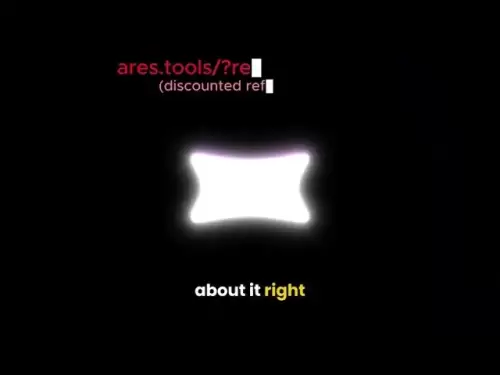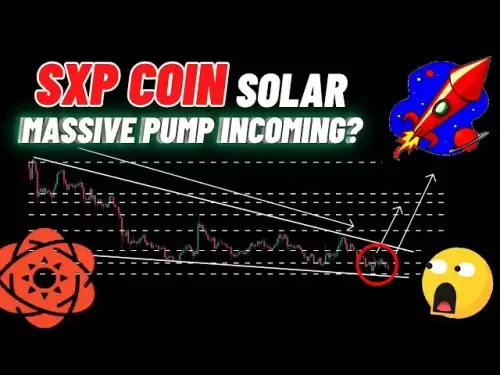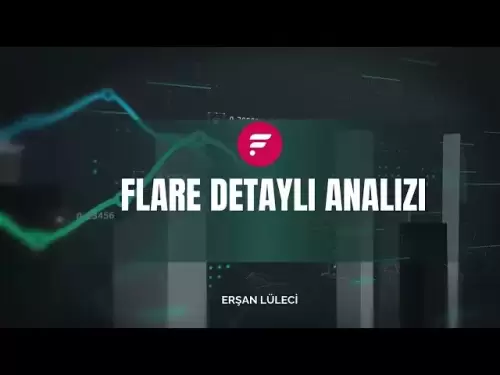-
 Bitcoin
Bitcoin $117500
2.04% -
 Ethereum
Ethereum $3759
3.02% -
 XRP
XRP $3.171
3.30% -
 Tether USDt
Tether USDt $1.000
0.03% -
 BNB
BNB $782.4
2.52% -
 Solana
Solana $187.2
5.62% -
 USDC
USDC $0.0000
0.02% -
 Dogecoin
Dogecoin $0.2380
5.26% -
 TRON
TRON $0.3175
1.07% -
 Cardano
Cardano $0.8227
4.03% -
 Hyperliquid
Hyperliquid $44.50
5.44% -
 Sui
Sui $4.020
10.07% -
 Stellar
Stellar $0.4396
6.28% -
 Chainlink
Chainlink $18.32
4.55% -
 Hedera
Hedera $0.2628
10.71% -
 Bitcoin Cash
Bitcoin Cash $554.8
4.90% -
 Avalanche
Avalanche $24.20
4.60% -
 Litecoin
Litecoin $113.7
2.31% -
 Shiba Inu
Shiba Inu $0.00001413
5.99% -
 UNUS SED LEO
UNUS SED LEO $8.984
0.11% -
 Toncoin
Toncoin $3.326
7.22% -
 Ethena USDe
Ethena USDe $1.001
0.00% -
 Uniswap
Uniswap $10.49
4.56% -
 Polkadot
Polkadot $4.092
4.02% -
 Monero
Monero $326.6
1.30% -
 Dai
Dai $1.000
-0.01% -
 Bitget Token
Bitget Token $4.570
2.49% -
 Pepe
Pepe $0.00001267
5.10% -
 Aave
Aave $297.3
3.10% -
 Cronos
Cronos $0.1344
4.10%
Does Trust Wallet support cross-chain transfers?
Trust Wallet supports cross-chain transfers, allowing users to move assets between blockchains like Ethereum and BSC directly within the app.
Apr 12, 2025 at 11:15 am
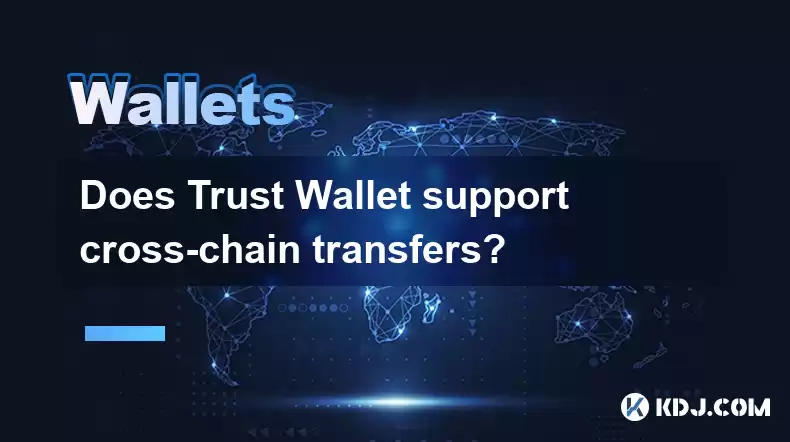
Does Trust Wallet Support Cross-Chain Transfers?
Trust Wallet, a popular mobile cryptocurrency wallet, has become a go-to choice for many users due to its user-friendly interface and support for a wide range of cryptocurrencies. One of the key features that users often inquire about is the ability to perform cross-chain transfers. In this article, we will explore whether Trust Wallet supports cross-chain transfers, how to execute them, and what users need to know about the process.
What Are Cross-Chain Transfers?
Before diving into the specifics of Trust Wallet, it's important to understand what cross-chain transfers are. Cross-chain transfers refer to the process of moving assets from one blockchain to another. This can be crucial for users who want to take advantage of different blockchain ecosystems, such as transferring tokens from Ethereum to Binance Smart Chain or vice versa.
Does Trust Wallet Support Cross-Chain Transfers?
Yes, Trust Wallet does support cross-chain transfers. The wallet integrates with various decentralized exchanges (DEXs) and bridges that facilitate these transfers. This means users can move their assets across different blockchains directly from the Trust Wallet app, without needing to use external services.
How to Perform Cross-Chain Transfers in Trust Wallet
To perform a cross-chain transfer in Trust Wallet, users need to follow a few steps. Here's a detailed guide on how to do it:
- Open Trust Wallet: Launch the Trust Wallet app on your mobile device.
- Select the Asset: Navigate to the wallet section and select the asset you want to transfer. For example, if you want to transfer ETH to BSC, select your ETH balance.
- Choose the Destination Chain: Once you've selected the asset, you'll see an option to "Send" or "Transfer". Click on this, and then look for an option to choose the destination chain. This might be labeled as "Cross-Chain Transfer" or something similar.
- Enter the Recipient Address: Enter the address on the destination chain where you want to send the asset. Make sure this address is correct, as transactions on blockchains are irreversible.
- Specify the Amount: Enter the amount of the asset you want to transfer. Be aware of any fees associated with the transfer.
- Confirm the Transaction: Review all the details, including the recipient address, the amount, and any fees. Once you're satisfied, confirm the transaction. You may need to enter your wallet password or use biometric authentication to proceed.
- Wait for Confirmation: The transaction will now be processed. Depending on the blockchains involved and the current network congestion, this can take anywhere from a few minutes to several hours.
Supported Chains and Assets
Trust Wallet supports cross-chain transfers for a variety of blockchains and assets. Some of the most commonly used chains include:
- Ethereum (ETH)
- Binance Smart Chain (BSC)
- Polygon (MATIC)
- Avalanche (AVAX)
- Fantom (FTM)
For each of these chains, Trust Wallet supports a range of tokens, including but not limited to:
- ERC-20 tokens on Ethereum
- BEP-20 tokens on Binance Smart Chain
- MATIC tokens on Polygon
- AVAX tokens on Avalanche
- FTM tokens on Fantom
Fees and Considerations
When performing cross-chain transfers, it's important to be aware of the fees involved. Transaction fees can vary depending on the source and destination chains, as well as the current network congestion. Additionally, some bridges or DEXs may charge a fee for facilitating the transfer.
Users should also consider the security of their transactions. Always double-check the recipient address and ensure you're using a reputable bridge or DEX. Trust Wallet integrates with well-known services, but it's still crucial to stay vigilant.
Troubleshooting Common Issues
Sometimes, users may encounter issues when performing cross-chain transfers. Here are some common problems and how to address them:
- Transaction Stuck: If a transaction appears to be stuck, check the status on a blockchain explorer. Sometimes, transactions can take longer than expected due to network congestion.
- Incorrect Recipient Address: If you've entered the wrong recipient address, unfortunately, there's little that can be done as blockchain transactions are irreversible. Always double-check the address before confirming the transaction.
- Insufficient Funds: Ensure you have enough funds to cover both the amount you want to transfer and the associated fees. If you're running low, you may need to add more funds to your wallet.
Frequently Asked Questions
Q: Can I transfer any token across chains using Trust Wallet?
A: Not all tokens are supported for cross-chain transfers. Trust Wallet supports a wide range of tokens, but the availability of cross-chain transfers depends on the specific token and the bridges or DEXs integrated with Trust Wallet.
Q: Are cross-chain transfers instant?
A: No, cross-chain transfers are not instant. The time it takes for a transfer to complete can vary depending on the blockchains involved and the current network conditions. It can take anywhere from a few minutes to several hours.
Q: Is it safe to use Trust Wallet for cross-chain transfers?
A: Trust Wallet is generally considered safe for cross-chain transfers, as it integrates with reputable bridges and DEXs. However, users should always exercise caution, double-check recipient addresses, and be aware of the fees and potential risks involved.
Q: Can I cancel a cross-chain transfer once it's initiated?
A: Once a cross-chain transfer is initiated, it cannot be canceled. Blockchain transactions are irreversible, so it's crucial to review all details carefully before confirming the transfer.
Disclaimer:info@kdj.com
The information provided is not trading advice. kdj.com does not assume any responsibility for any investments made based on the information provided in this article. Cryptocurrencies are highly volatile and it is highly recommended that you invest with caution after thorough research!
If you believe that the content used on this website infringes your copyright, please contact us immediately (info@kdj.com) and we will delete it promptly.
- Vaultz Capital's Bitcoin Bet: A Strategic Shift on the Aquis Exchange
- 2025-07-26 20:30:12
- Pi Coin, Wallet Features, and Coinbase: What's the Buzz?
- 2025-07-26 18:30:12
- Worldcoin, Punisher Coin, and the Meme Coin Mania: What's the Haps?
- 2025-07-26 18:30:12
- Conviction, Justice System, and Murders: A Look at Recent Cases and Shifting Perspectives
- 2025-07-26 18:50:11
- Shiba Inu, Remittix, and the Market Surge: What's the Hype?
- 2025-07-26 19:10:12
- Cardano Price, ADA Holders, and Leadership Criticism: What's the Real Deal?
- 2025-07-26 19:30:12
Related knowledge
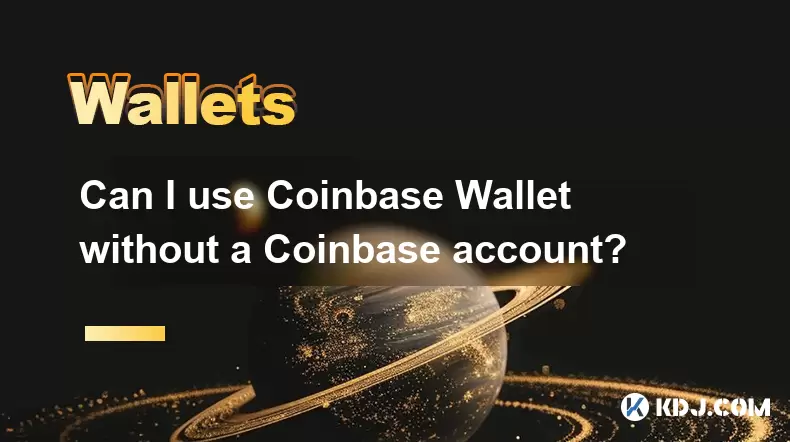
Can I use Coinbase Wallet without a Coinbase account?
Jul 18,2025 at 04:35am
What is Coinbase Wallet?Coinbase Wallet is a self-custodial wallet that allows users to store, send, and receive various cryptocurrencies directly on ...
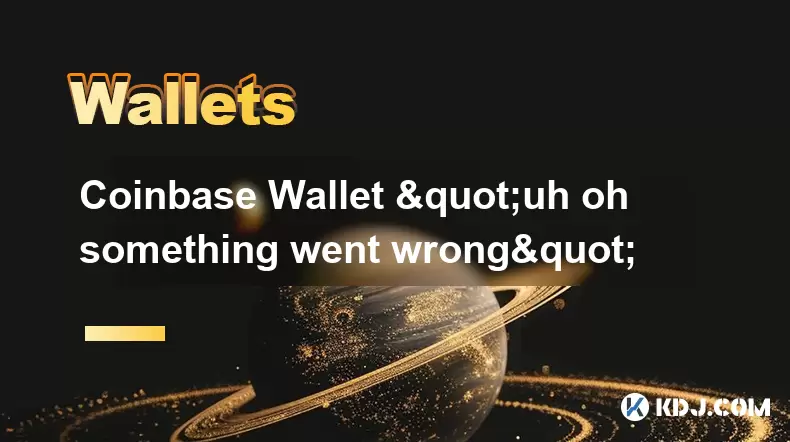
Coinbase Wallet "uh oh something went wrong"
Jul 20,2025 at 10:00am
Understanding the Coinbase Wallet Error: 'Uh Oh, Something Went Wrong'If you're a Coinbase Wallet user, encountering the error message 'Uh Oh, Somethi...
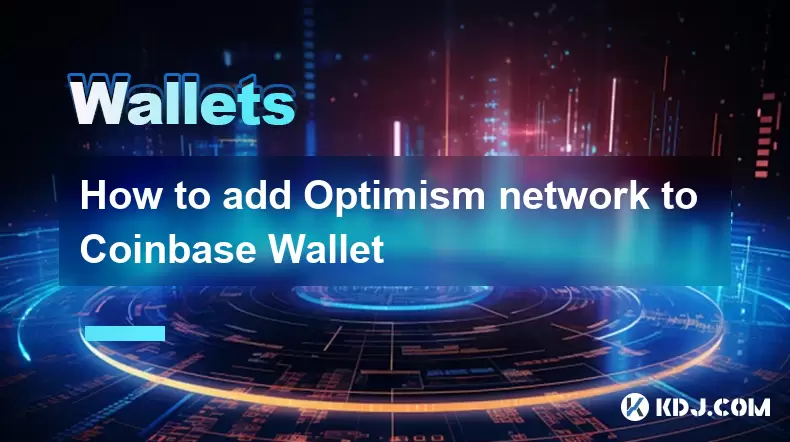
How to add Optimism network to Coinbase Wallet
Jul 20,2025 at 05:21am
What is the Optimism Network?The Optimism network is a Layer 2 scaling solution built on top of the Ethereum blockchain. It aims to enhance transactio...
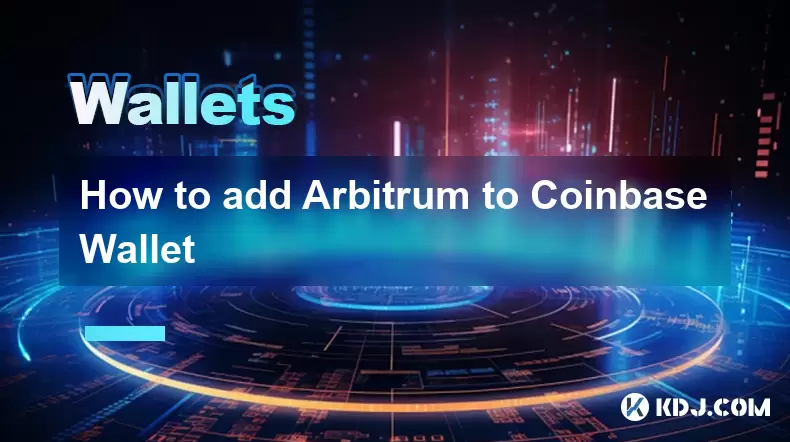
How to add Arbitrum to Coinbase Wallet
Jul 18,2025 at 03:00pm
Understanding Arbitrum and Its Integration with Coinbase WalletArbitrum is a layer-2 scaling solution developed by Offchain Labs to enhance the speed ...
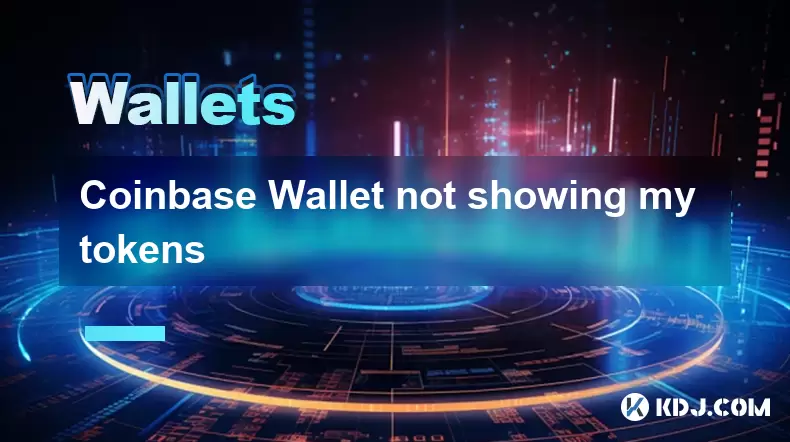
Coinbase Wallet not showing my tokens
Jul 18,2025 at 09:49am
Understanding Coinbase Wallet Token Display IssuesIf you're experiencing issues where Coinbase Wallet not showing my tokens, it can be frustrating, es...
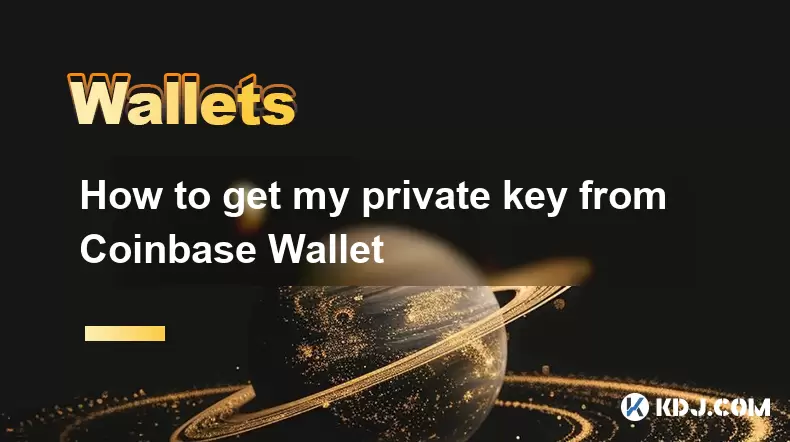
How to get my private key from Coinbase Wallet
Jul 24,2025 at 08:01pm
What Is a Private Key and Why Is It Important?In the world of cryptocurrency, a private key is a unique alphanumeric code that grants you full access ...

Can I use Coinbase Wallet without a Coinbase account?
Jul 18,2025 at 04:35am
What is Coinbase Wallet?Coinbase Wallet is a self-custodial wallet that allows users to store, send, and receive various cryptocurrencies directly on ...

Coinbase Wallet "uh oh something went wrong"
Jul 20,2025 at 10:00am
Understanding the Coinbase Wallet Error: 'Uh Oh, Something Went Wrong'If you're a Coinbase Wallet user, encountering the error message 'Uh Oh, Somethi...

How to add Optimism network to Coinbase Wallet
Jul 20,2025 at 05:21am
What is the Optimism Network?The Optimism network is a Layer 2 scaling solution built on top of the Ethereum blockchain. It aims to enhance transactio...

How to add Arbitrum to Coinbase Wallet
Jul 18,2025 at 03:00pm
Understanding Arbitrum and Its Integration with Coinbase WalletArbitrum is a layer-2 scaling solution developed by Offchain Labs to enhance the speed ...

Coinbase Wallet not showing my tokens
Jul 18,2025 at 09:49am
Understanding Coinbase Wallet Token Display IssuesIf you're experiencing issues where Coinbase Wallet not showing my tokens, it can be frustrating, es...

How to get my private key from Coinbase Wallet
Jul 24,2025 at 08:01pm
What Is a Private Key and Why Is It Important?In the world of cryptocurrency, a private key is a unique alphanumeric code that grants you full access ...
See all articles





















